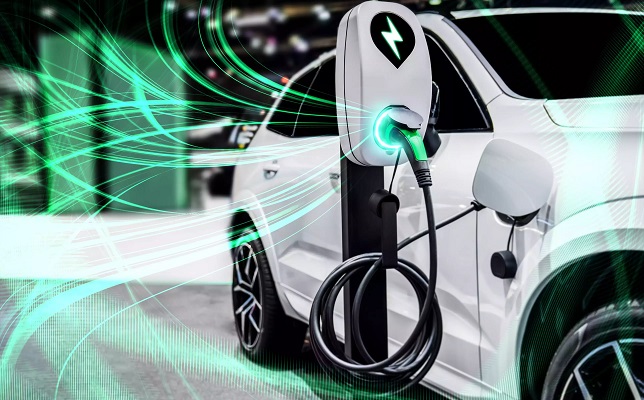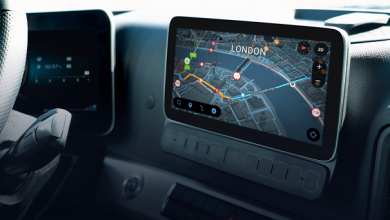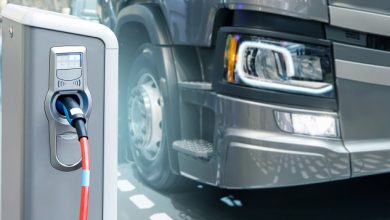The EV Charging Ecosystem paves the way for a New Technology Paradigm

1. Mobility is the Hub of IoT in the Smart City
Nowadays, around 55% of the world’s population is estimated to be living in an urban area or city, a proportion that is expected to rise to 80% by 2050 (WEF, 2022). More than two-thirds of global population, nearly 7 billion people, will live scattered over a small portion of the planet as cities only cover 2% of the world’s land but consume over 78% of the world’s energy and account for more than 70% of global CO2 emissions. In this global scenario, cities are becoming the hubs of the services-based world economy and movement of people and goods becomes a key factor to increase of social cohesion, economic and environmental development. Mobility affects people’s wellbeing and societal progress as it provides access to education, jobs, healthcare, and trade.
However, today’s mobility systems are unable to meet future demands without leading to increasing congestion and pollution. Indeed, urban mobility is currently responsible for 40% of all CO2 emissions from road transport and up to 70% of other pollutants from transportation. Mobility sector is a major source of greenhouse gas emissions globally and, consequently, a crucial factor for winning the 1.5-degree challenge. To address the worrying effects from these projections, several specific measures are already being taken on a global scale, such as optimizing public transportation and accelerating automated, connected, electrified, and shared mobility (ACES). Smart urban mobility is increasingly relying on today’s data generation and sharing technologies, which are needed to support decision-making for greater interaction between the public and private transportation sectors.
From a technology perspective, a global trend is clearly underway, namely, the progressive integration of all services into technology platforms. This implies that all user-centered services are managed by technology platforms to be delivered seamlessly.
In the Smart City digital ecosystem, among the wide variety of software platforms, mobility is the most intense and complex technology. Mobility platform provides the foundational technology layer for integrating all user-centered services.
2. The Role of EV Charging Infrastructure in Making a Smarter City
Electrification of transportation and mobility results to be one of the key enablers for boosting transition to greater sustainability and innovation. Electric vehicles (EVs) help a city become smarter in terms of eco-friendly transportation system, pollution reduction, and accelerating the integration of renewable energy sources. The growing spread of EVs introduces new opportunities and threats to existing energy system. EVs do not create a power-demand crisis, but they can reasonably contribute to hourly peak demand and then, reshape the electricity load curve. This entails that – if the EV charging is not managed smartly but in an uncontrolled and simultaneous way – the current energy system is unable to support the expectable additional burden caused by the hourly peak demand in congested zones. On contrary, if charging is performed in smart way, the impact of a rising EV market could be not only neutral but also profitable to the energy system overall. In a more comprehensive perspective, an EV is not only a useful means of transportation to accelerate the decarbonization process, but also a “mobile energy storage”. Considering that the EVs spend an average of 95% of their time idle in parking lots, it makes sense to leverage that inactivity to turn these vehicles in “battery banks of the future” and thus help stabilize electrical grids powered by intermittent renewable energy sources (IRENA, 2019).
In this framework, the timing of recharge clearly emerges as a critical issue. Innovation based on cloud-based solutions is the response to this challenge. Smart charging technology allows charging speed to be changed depending on requirements of customers and power grid system. This digital infrastructure enables communication among the EVs, the charge point operator’s cloud-based charging management platform, and the power grid system so that the energy consumption can be modulated and adjusted based on current energy demand. In this way, owners of EVs can connect their means to the power grid during expensive off-peak hours, without the vehicle consuming power until the economic off-peak hours. Smart charging promotes increasing penetration of EVs without affecting the existing grid infrastructure while maximizing the integration and the use of renewable energy sources.
Implementation of smart charging systems starts from basic models – which encourage consumers to defer charging from peak to off-peak periods – to more advanced models that provide energy balancing and ancillary services in near-real time.
Additional flexibility to the power grid can be achieved through Vehicle-To-Grid Technology, where the EV battery can not only draw power from the grid (V1G) but also inject electricity back into the grid (V2G). As a result, EVs can serve as energy storage facilities – by providing the needed flexibility to the smart grid operator – and as a distributed energy source – by providing energy back to the grid.
EV fleets can therefore generate large electricity storage capacity. If most vehicles sold as of 2040 were electric, more than 1 billion EVs could be on the road by 2050 (compared to about 6 million today), exceeding the capacity of stationary batteries. These projections indicate that about 14 tera-watthours (TWh) of EV batteries could be available in 2050 to provide grid services, compared with only 9 TWh for stationary batteries (IRENA, 2019).
In addition to these benefits, implementation of Vehicle-to-Grid (V2G) service opens up the opportunity to develop new business models based on the concept of energy-as-a-service:
- powering household loads (Vehicle-to-Home – V2H) to supply loads in case of failures or to optimize the cost of the bill by playing on different energy prices in charge and discharge cycles carried out at different times
- integrating EVs with buildings (Vehicle-To-Building – V2B) and Energy Communities (ECs) to optimize the use of locally available generation resources by maximizing self-consumed energy (i.e., energy that is locally produced and locally consumed/stored in batteries)
- using EVs (only those with large capacity) to provide ancillary services to the grid (black start, voltage control, frequency control, reserve) and/or provide power to microgrids in island operation.
Digitalization of electric grid into smart grid fosters the integration of value-added services targeting prosumers and other stakeholders involved in the energy market. Thus, the use of EVs not only challenges the sustainability of smart grid, but also promotes and encourages its upgrading, acting as a driver of economic development.
Flexibility in the electricity system emerges as the glue that connects a renewable energy system with the growing shares of renewable energy to increasingly electrified end-use sectors. Power system flexibility – coupled with the adoption of smart technologies (V1G, V2G and V2H/V2B/V2X) and the introduction of new regulations, business models, and operating practices – allows for reliable and cost-effective electricity supply.
An overview of EV charging infrastructure market clearly shows how the global scenario is fast growing, highly segmented and therefore particularly complex. The global EV charging station market is expected to grow from 2,354 thousand units in 2022 to 14,623 thousand units by 2027, a CAGR of 44.1% (MarketsandMarkets, 2022). In addition to the technological innovations mentioned above, the main growth factors are four: the increasing adoption of EVs, the urgency of reducing carbon dioxide emissions, the government initiatives and tax incentives to encourage faster deployment of EV charging infrastructure, and, finally, also the reduction in the price of electric cars.
High complexity of this ever-evolving market lies in the degree of segmentation that is structured at the level of charging mode (plug-in charging and wireless charging systems, also known as static and dynamic inductive charging systems), charging type (Level 1-120V, Level 2-240V and Level 3- DC rapid/fast/Superchargers), different types of users (residential and commercial), and, finally, according to geographical region (North America, Europe, Asia-Pacific and LAMEA-Latin America, Middle East and Africa).
A closer analysis of this data clearly highlights the main factor hampering the growth of this market: the lack of standardization of current EV charging infrastructure.
Only a few years ago, customers’ main concerns had about purchasing EVs were about price and driving range. Today, number one concern is another: ensuring accessibility to adequate charging infrastructure network. From the EV driver’s viewpoint, in terms of user experience, this means always having the certainty of being able to recharge when and where needed, with a minimum of hassle or unexpected problems. The lack of common standardization is found mainly in three aspects: the differences between EVs and charging connectors, the communication protocols between the car and the charger, and finally the issue of security and transparency of charging payment.
3. The Challenges of EV Charging Ecosystem
EV charging ecosystem includes a variety of businesses and service providers, but not the power suppliers to grid. They are five components of that ecosystem: OEMs, EVs, electric vehicle supply equipment (EVSE), charge point operator (CPO) and finally E-Mobility service provider (EMSP). To ensure a smooth and efficient transition to a sustainable mobility, interoperability needs to become a widespread and standardized best practice. Thus, EVs, charging facilities and additional services need to be compatible with each other for the purpose of promoting broad adoption of electric cars and thus help overcome various regulatory, commercial, or political barriers.
The figure below illustrates the myriad of communication protocols and technology standardization among stakeholders taking on different market roles in the charging network. EV charging infrastructure must be therefore resilient and operate according to shared standards to support exponential market growth and a wide range of evolving use cases.
Interoperability emerges as a critical issue both from the EV driver and various stakeholders point of views.
For an EV driver, the possibility to recharge anywhere (EV Roaming), anytime with a single card or other method of identification, regardless of the brand or type of the charging station operator and service provider is clearly a priority.
Thus, electric vehicle supply equipment needs to be able to upscale their networks while expanding their offerings and delivering a seamless charging experience for drivers. Developing a back-end system that can increase charger availability by analyzing and fixing problems remotely is therefore required. Different charging locations clearly have their specific requirements. EVSPs can then support different types of locations and business models through a flexible back-end system that also supports open standards for grid connectivity to and within the network, and APIs for legacy applications.
Flexible billing options are also not exempt from critical issues. In case a user has chosen a contract-based solution by signing a contract with charging point operators or e-mobility service providers (CPOs or EMSPs), the first step of a recharge process in a charging infrastructure is the user identification/authorization phase, which is not uniform and still open, due to different technological solutions chosen by different CPOs/EMSPs. CPO systems, thus, need to work in synergy with EMSPs as well as the other ecosystem stakeholders.
In this regard, among new technologies, Distributed ledger technology (DLT), such as blockchain, acting as fundamental data layer on which information, values and electrons are exchanged, has the potential to play a crucial role in transforming the entire energy sector, starting with the facilitation of identification and authentication procedures that underlie applications that perform optimization and coordination of energy production and distribution processes (IRENA, 2019).
It follows that one of the major challenges facing the electric vehicle charging industry today is heterogeneity and, thus, scalability.
EV charging ecosystem challenges thus call Energy Management Technology into question.
4. Towards a New Technological Paradigm: The Digital Integration Hub
The high level of complexity only mentioned in the previous section emphasizes how the implementation of a new IT architecture underpins EV charging infrastructure.
In this global charging ecosystem scenario, integration emerges as a new paradigm not only in technology, but also in business and governance.
Developing a smart charging infrastructure depends primarily on several organizational and technological assumptions:
- the need for data to know in detail the available resources (location data of the EV connected to charging column, available energy in the battery, SOH, zonal energy price, etc.)
- the integration of EV with ECs’ energy management systems, which requires interoperability and convergence of standards (SAE vs. IEEE)
- the evolution of regulation
- the availability of reliable price signals
The proliferation of front-end applications and to the exposure of third-party services offered via APIs is now an acknowledged fact.
These new channels on the one hand produce an increase in business opportunities, but on the other hand expose IT platforms to a large volume of calls to be processed.
As emerges in a well-known 2018 study by Gartner, the Digital Integration Hub (DIH) can be an architectural response to this current issue. The DIH is an advanced application architecture that aggregates multiple back-end systems, which manages data by creating a single scalable, high-performance data store. This high-performance data store is synchronized with application data sources through integration patterns that combine event, request, and batch logics. The focus of this architectural paradigm is on improving Customer Experience.
5. The Architectural Model
The main features of the Model are as follows:
- A robust set of standard API to access in a “standard” way heterogeneous data sources. In addition, “hooks” should be provided to collect data directly from the event/message bus (Kafka)
- A micro/mini services architecture for a better and easier horizontal scalability and implementation of new features (managed by Kubernetes)
- A centralized console to manage the CI/CD pipelines to standardize deployment
- A centralized console to manage the “control” of the solution: events monitoring, log collection and correlation, metrics collection
- Dedicated database to optimize storage and speed: noSQL, timeseries
The Digital Integration Hub architectural pattern can ensure easy, fast, and highly scalable access to applications and data from so-called Systems of Record, i.e., enterprise legacy systems, all using structured APIs on different levels. The purpose of a DIH is to boost the implementation of a high throughput, low latency API layer by realizing a decoupling between data from legacy systems and data processing services from APIs, by enabling to:
- prevent overloading of legacy systems due to computational load required by APIs
- simplify the application integrations required by the implementation of API services
- create new and advanced digital experiences for users through front-end systems through an orchestrated ecosystem of microservices
This architectural model envisions the adoption of several open-source products and projects, such as Kubernetes, Apache Kafka, MongoDB, ELK, Prometheus, GitLab, and Nexus to prevent technological lock-in.
Authors:

Domenico Mangiacapra
CEO
Henshin Group
He has been working around new technology mobility platforms for many years, holding several executive positions in various IT companies. Currently, he is CEO of Henshin Group, a tech company focused on developing IoT infrastructure designed to be an open-source platform ecosystem for mobility and energy.

Roberto Balzerani
Innovation Director
Sopra Steria
He has been working in the energy industry for many years. He currently holds the position of Innovation Director at Sopra Steria Italy where he is working on the development of digitalisation technologies that are enabling the energy transition. Sopra Steria is a European Tech leader recognised for its consulting, digital services and software development, helps its clients drive their digital transformation to obtain tangible and sustainable benefits.
Published in Telematics Wire





